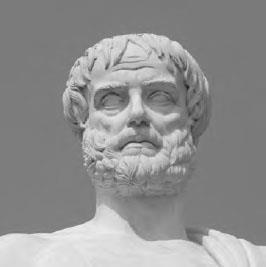The word physics comes from the Greek physis, meaning nature. Aristotle (384–322 B.C.E.) wrote the first known book entitled Physics, which consisted of a set of eight books that was a detailed study of motion and its causes. The ancient Greek title of the book is best translated as Natural Philosophy, or writings about nature. For that reason, those who studied the workings of nature were called “Natural Philosophers.” They were educated in philosophy and called themselves philosophers. One of the early modern textbooks that used physics in its title was published in 1732. It was not until the 1800s that those who studied physics were called physicists. In the nineteenth, twentieth, and twenty-first centuries physics has proven to be a very large and important field of study. Due to the huge breadth of physics, physicists today must concentrate their work in one or two of the subfields of physics. The most important of these fields are listed below.
- Quantum mechanics and relativity— Both of these fields study the descriptions and explanations of the way small particles interact (quantum physics), the motion of objects moving near the speed of light (special relativity), and the causes and effects of gravity (general relativity).
- Elementary particles and fields—The study of the particles that are the basis of all matter. Both their properties and their interactions are included.
- Nuclear physics—The study of the properties of the nuclei of atoms and the protons and neutrons of which they are composed.
- Atomic and molecular physics—The study of single atoms and molecules that are made up of these atoms. Studies include interactions with each other and with light.
- Condensed matter physics—Otherwise known as solid-state physics, condensed matter is a study of the physical and electrical properties of solid materials. An exciting new study is that of nano materials, leading to nanotechnology.
- Electromagnetism and optics—Studies how electric and magnetic forces interact with matter. Light is a type of electromagnetic wave and so is a part of electromagnetism.
- Thermodynamics and statistical mechanics—Studies how temperature affects matter and how heat is transferred. Thermodynamics deals with macroscopic objects; statistical mechanics concerns the atomic and molecular motions of very large numbers of particles, including how they are affected by heat transfer.
- Mechanics—Deals with the effect of forces on the motion and energy of physical objects. Modern mechanics studies mostly involve fluids (fluid dynamics) and granular particles (like sand), as well as the motions of stars and galaxies.
- Plasma physics—Plasmas are composed of electrically charged atoms. Plasmas studied include those in fluorescent lamps, in large-screen televisions, in Earth’s atmosphere, and in stars and material between stars. Plasma physicists are also working to create controlled nuclear fusion reactors to produce electricity.
- Physics education research—Investigates how people learn physics and how best to teach them.
- Acoustics—Musical acoustics studies the ways musical instruments produce sounds. Applied acoustics includes the study of how concert halls can best be designed. Ultrasound acoustics uses sound to image the interior of metals, fluids, and the human body.
- Astrophysics—Studies how astronomical bodies, such as planets, stars, and galaxies, interact with one another. A subfield is cosmology, which investigates the formation of the universe, galaxies, and stars.
- Atmospheric physics—Studies the atmosphere of Earth and other planets. Today most activity involves the causes and effects of global warming and climate change.
- Biophysics—Studies the physical interactions of biological molecules and the use of physics in biology.
- Chemical physics—Investigates the physical causes of chemical reactions between atoms and molecules and how light can be used to understand and cause these reactions.
- Geophysics—Geophysics is the physics of Earth. It deals with the forces and energy found within Earth itself. Geophysicists study tectonic plates, earthquakes, volcanic activity, and oceanography.
- Medical physics—Investigates how physical processes can be used to produce images of the inside of humans, as well as the use of radiation and high-energy particles in treating diseases such as cancer.

The Greek philosopher Aristotle wrote the first known book about physics.

